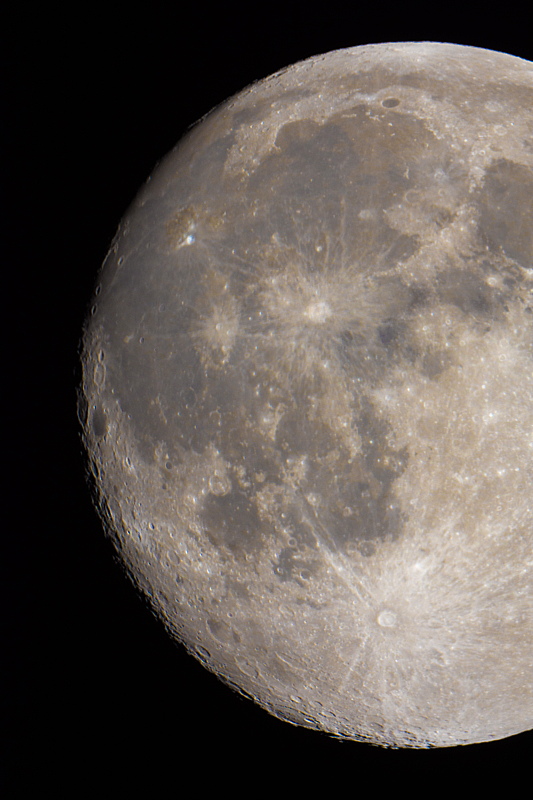International Space Station through 8" Telescope
Posted: 1 June 2015
Clouds appeared in late afternoon on Saturday, 30 May 2015. My plan to photograph the International Space Station (ISS) during an excellent pass that night was wiped out. The sky was partly cloudy during the day on Sunday, 31 May, but mostly cleared as sunset approached, allowing for an attempt with an even better ISS pass.
|
Open: Sunday, 31 May 2015, 1846 MST Temperature: 100°F |
Session: 829 Conditions: Mostly clear, clouds in southern 1/4th of sky |
On my way to the observatory I took a couple of photos of some cactus flowers:


1856 MST: viewed Venus, 83X. I then updated the TLE for this night's ISS pass. 1903 MST: viewed Jupiter, 83X; no moons visible. 1908 MST: the moons Io, Europa, and Ganymede were now visible, but Callisto was not. 1916 MST: Callisto was now faintly visible, 83X. Switched to 222X for some brief Jupiter observing. 1925 MST: clouds were now at Jupiter. The waxing gibbous Moon had risen over the hill to the southeast. I stepped outside of the observatory for this photo at 1928 MST:

The clouds could be a problem for the ISS pass. 1928 MST: sunset. Slewed to the Moon and began waiting for it to rise above the tree as seen from the observatory. 1942 MST: the Moon was now completely obscured by clouds. I began preparing the D7200 DSLR for prime focus imaging with the 8" LX200-ACF.
1951 MST: the Moon was above the tree and visible through a hole in the clouds. Got this photo; increased saturation to show some colors:

Added the PowerMate 2X Barlow Lens and took this photo of the Moon's southern region and prominent crater Tycho:

I locked the telescope focus and checked the finderscope alignment (OK). I was then ready for the ISS, but clouds could be a problem, especially at mid-pass where the space station would be closest. This iPhone photo shows the Moon in the clouds; the ISS would pass along the area at the top at the photo:

The pass began at 2025 MST and tracking was pretty good. I did an HD video recording at prime focus + 2X PowerMate, 1.3X crop factor, 60 frames per second, 1/1600sec, ISO 6400, for 8 minutes, 16 seconds. This full-frame image from the video shows the image scale:

Here are some images of the ISS cropped from individual frames near mid-pass:

I have obtained better images of the ISS (as seen on the Photos: Satellites album) with the D7000 DSLR. I'm still trying to determine the best exposures to use with my new D7200 DSLR. For this pass, ISO 6400 was too much, resulting in some overexposure. The 2X PowerMate in combination with the 1.3X crop factor with the video recording yielded too much magnification for the seeing conditions on this night. My next attempt will use 1/2000sec, ISO 5000, at prime focus, weather permitting on Tuesday, 2 June.
As it turned out, the clouds had thinned out by the time of the ISS pass but seeing was terrible, as I discovered when I viewed Saturn at 2039 MST. I quickly gave up any imaging attempt and removed the camera from the telescope. I tried to view the planet at 222X but there was too much turbulence. Even at 83X the view was lousy. I was able to see four moons: Titan, Rhea, Tethys, and Dione.
Began closing. No Kissing Bugs were seen this night.
|
Close: Sunday, 31 May 2015, 2100 MST Temperature: 79°F |
|
Comments are welcome using Email. If you are on Twitter you can use the button below to tweet this report to your followers. Thanks.
Cassiopeia Observatory Home Page
Copyright ©2015 Michael L. Weasner / mweasner@me.com
URL = http://www.weasner.com/co/Reports/2015/06/01/index.html
